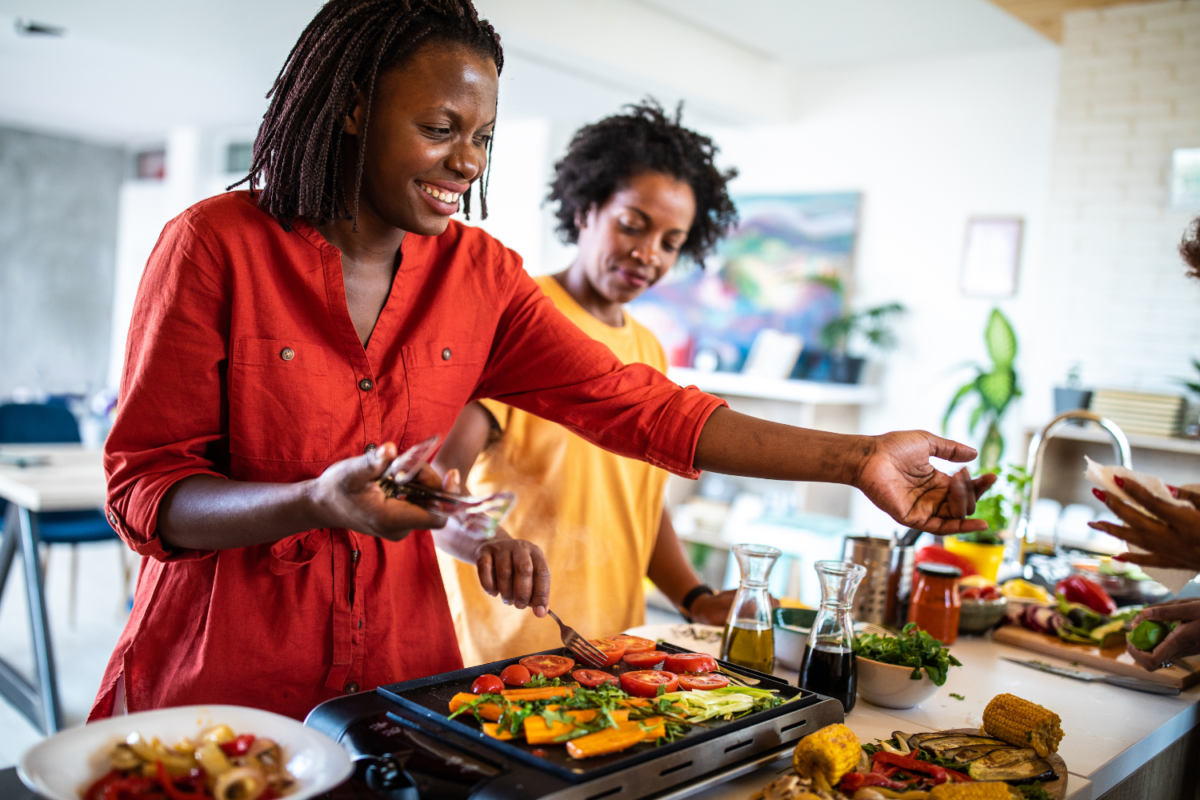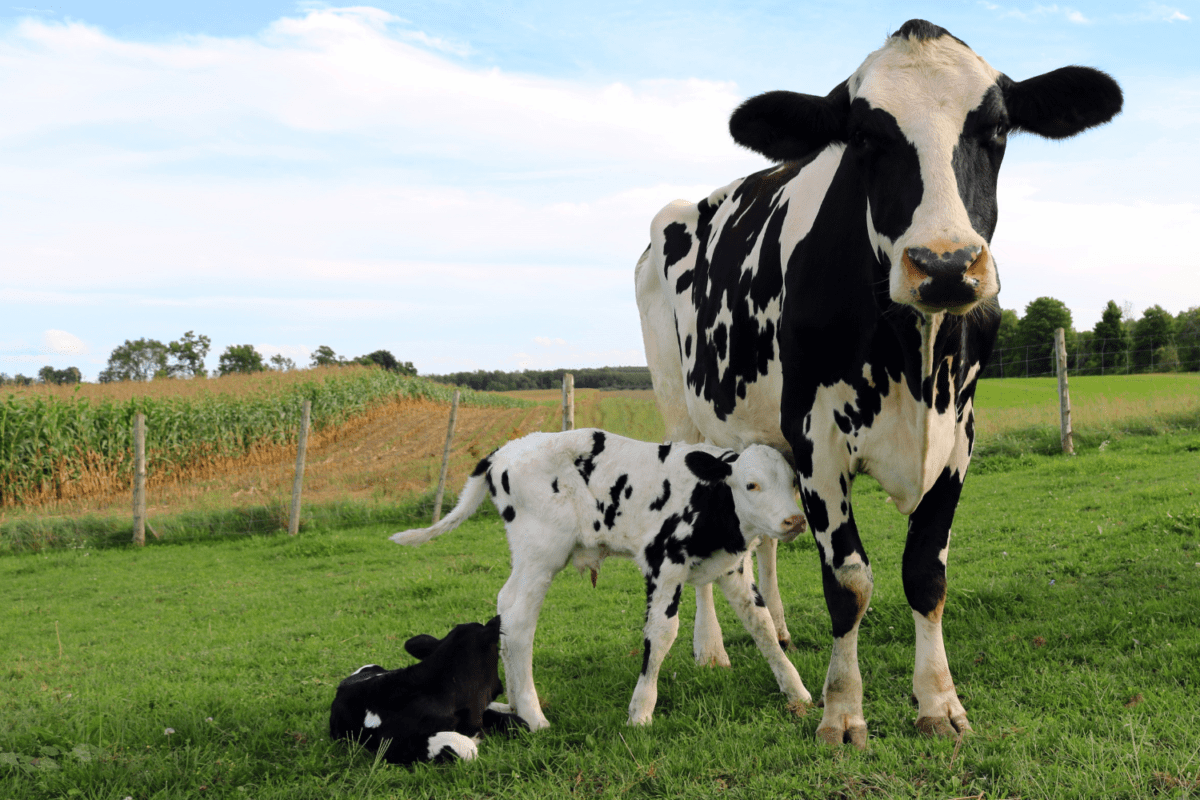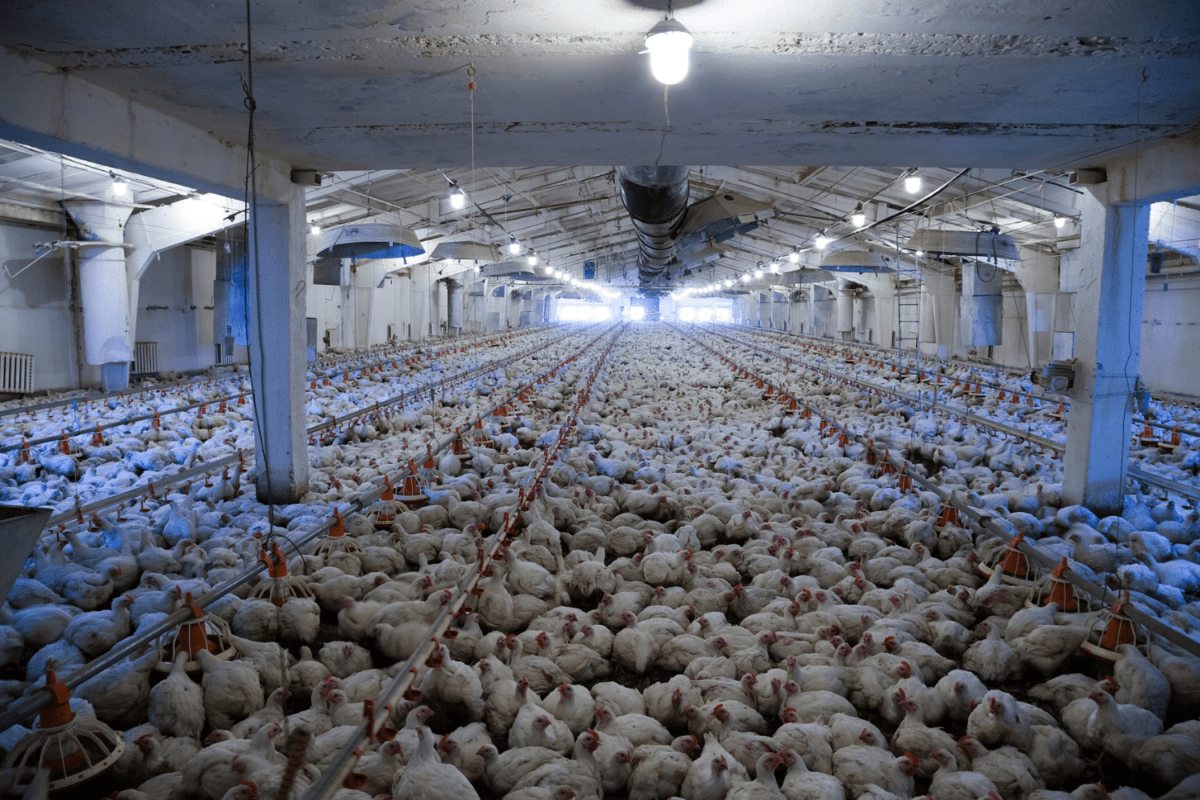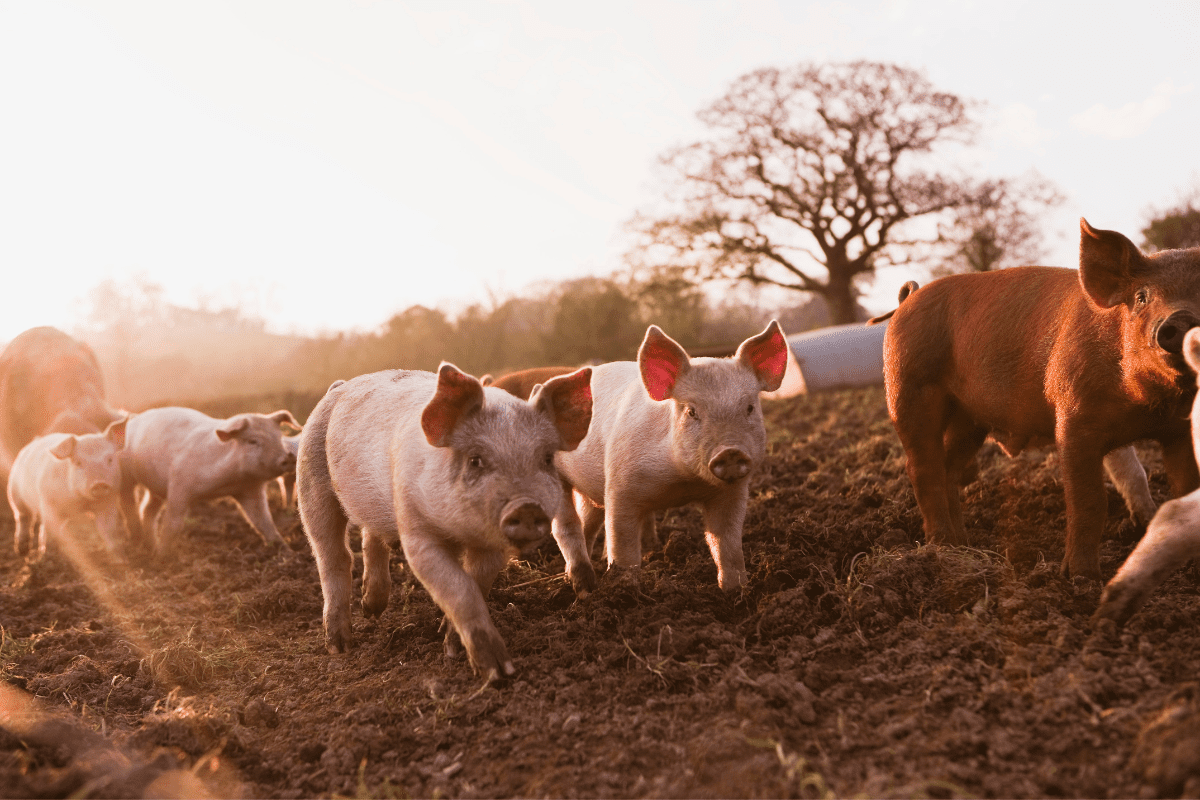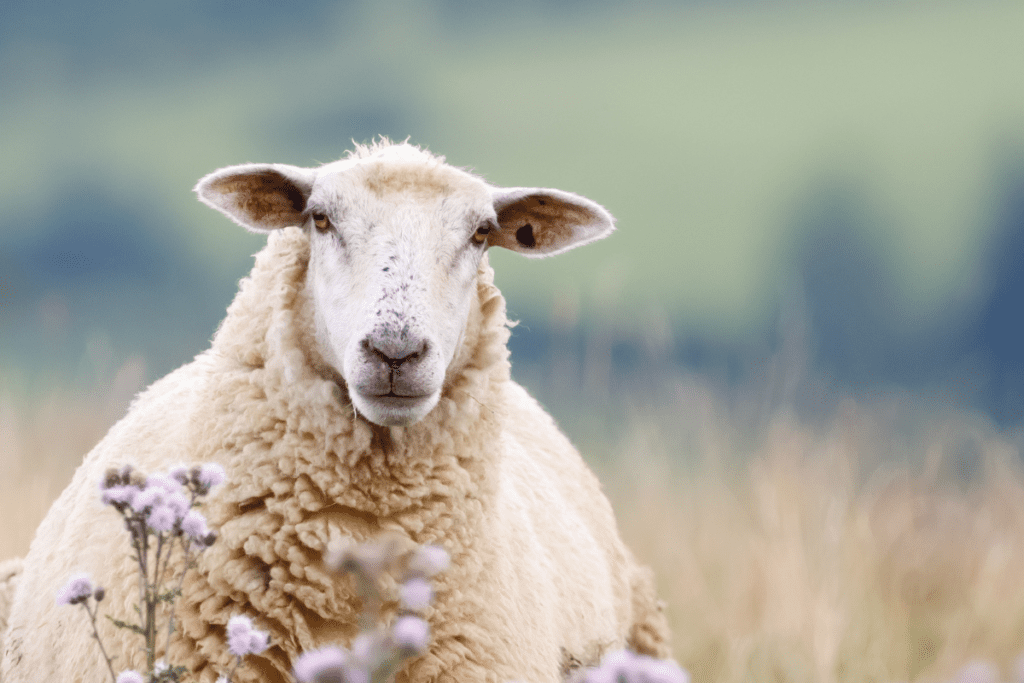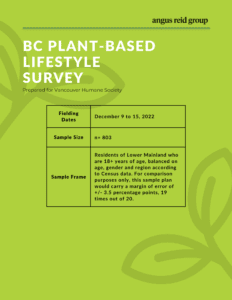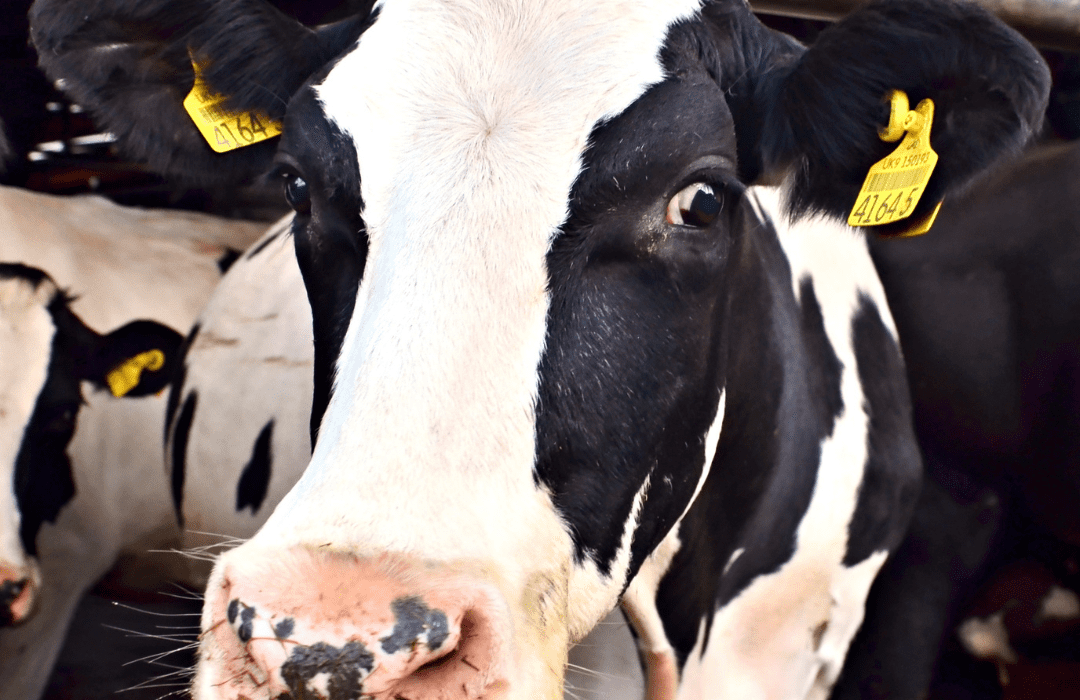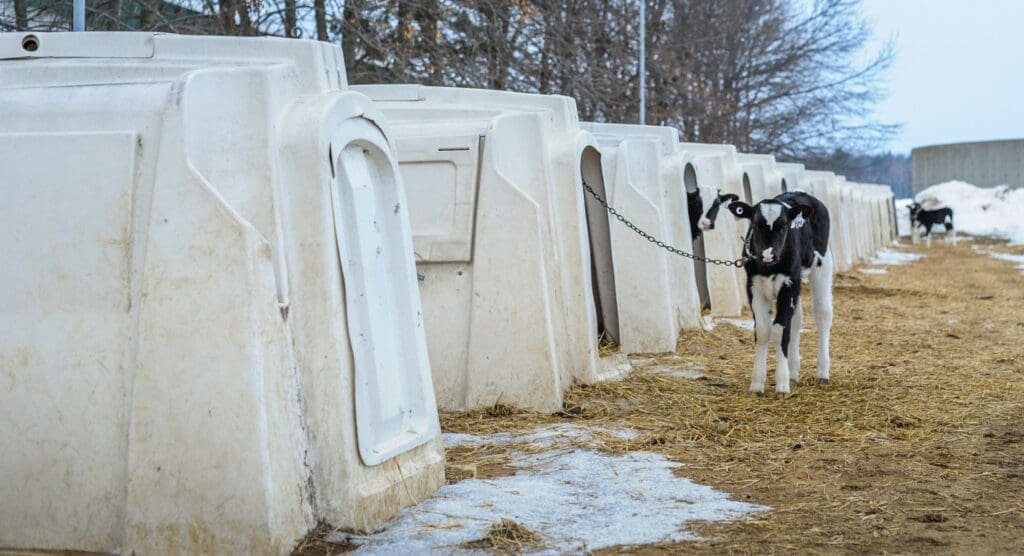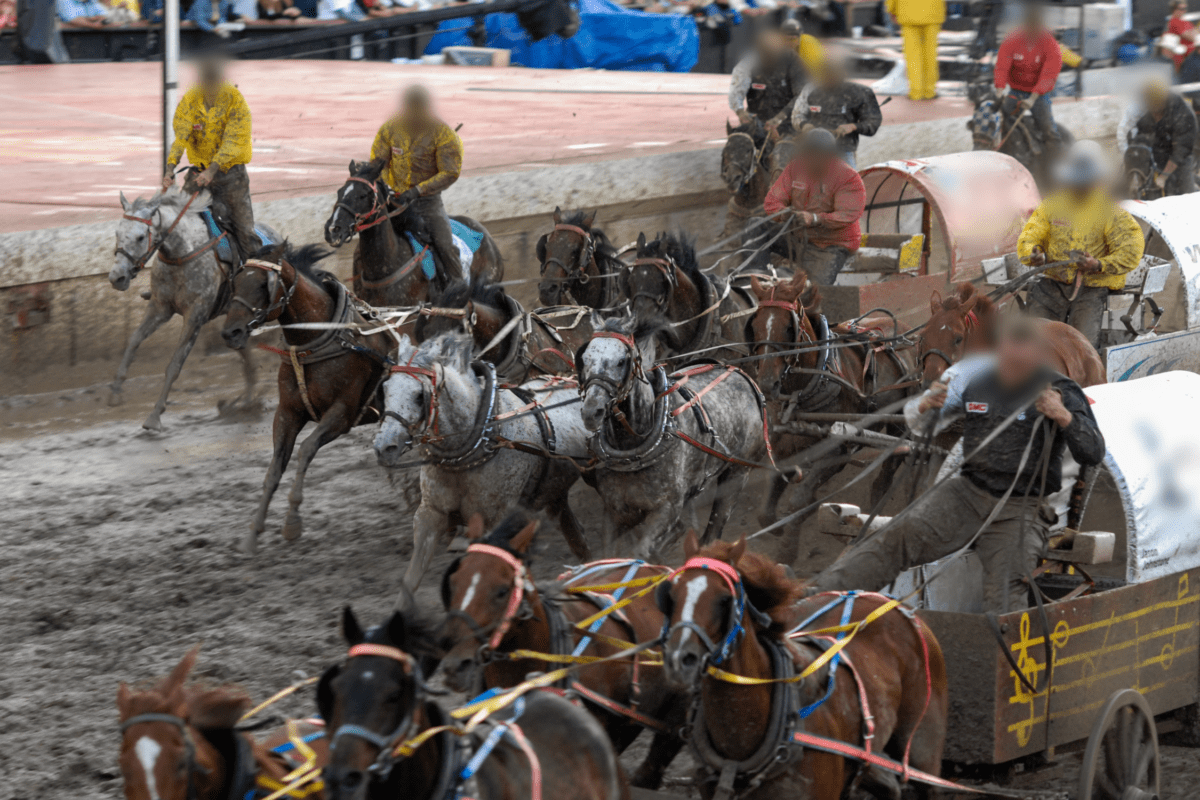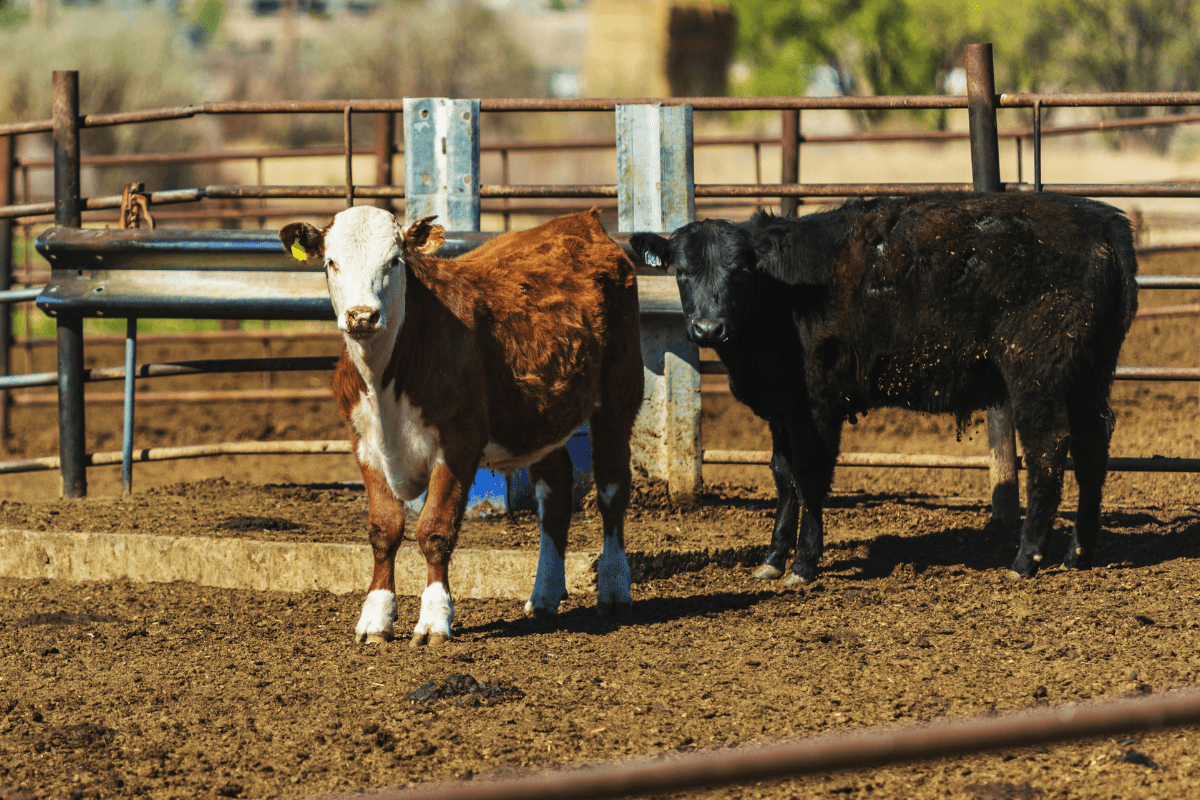The plant-based journey looks different for everyone.
In this month’s episode of The Informed Animal Ally, the Vancouver Humane Society’s Amy Morris and Chantelle Archambault are joined by guest Danielle George to discuss healthism and ableism in the plant-based discussion, as well as ways to make plant-based eating more accessible to everyone.
Note: This written discussion has been edited for length.
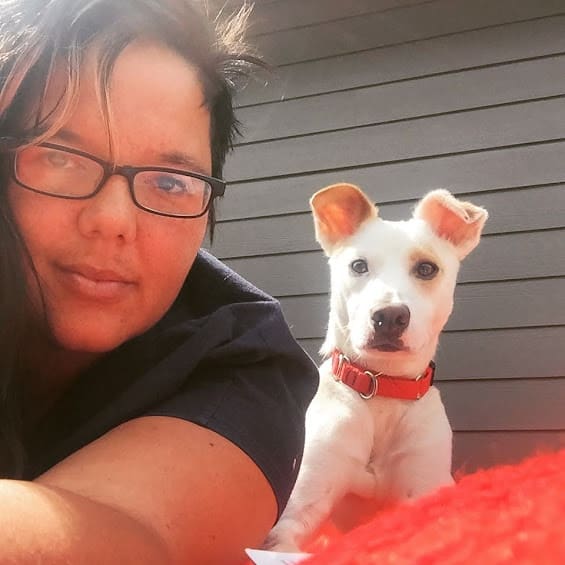
Featured Guest: Danielle George
VHS Board Director
Danielle George has been a member of the Board here at the Vancouver Humane Society since September, 2021. Danielle has a bachelor’s degree in Sociology at The Evergreen State College. She’s passionate about food, social justice, and animal welfare, and the crucial intersections between them.
What can going vegan look like?
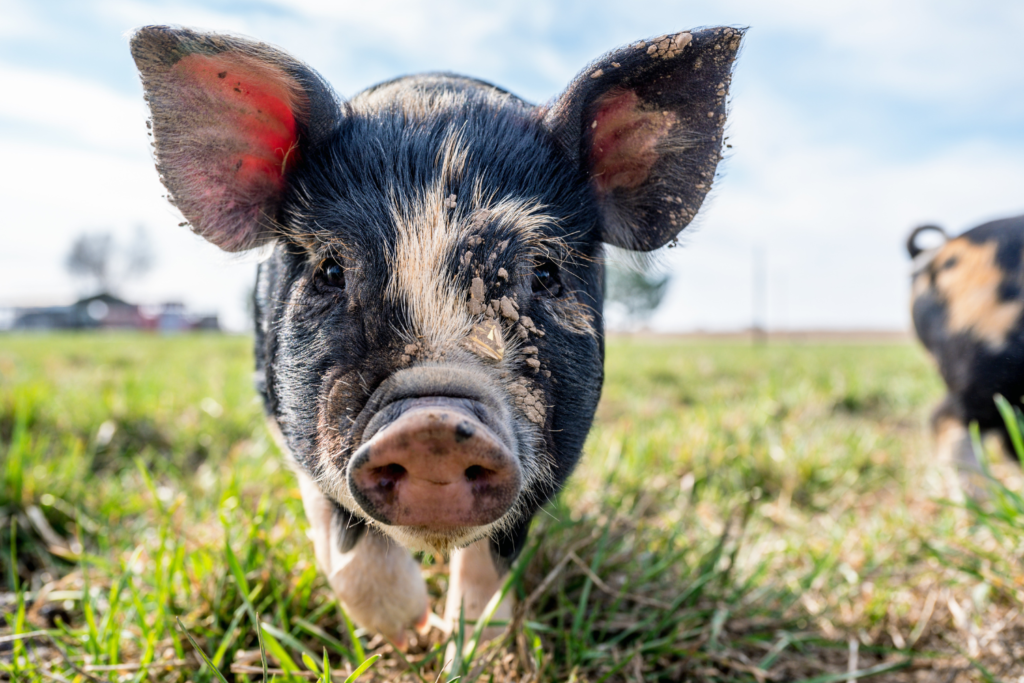
Chantelle: Before we get started, I’d like to note that we’ll be touching on topics of healthism and ableism, and there are also mentions of eating disorders. If this is something you have difficulty hearing about, we recommend that you have a plan in place to deal with complicated emotions that may come up.
Danielle, thank you so much for joining us today. Can you tell us more about your history with veganism and animal advocacy?
Danielle: I started out as a vegetarian since I was 13 years old. I read The Jungle by Upton Sinclair, and I think that’s such a good example of intersections between animal advocacy and what we eat and also compassion and caring for humans.
I read this book about the meat packing industry in Chicago, and I took from it that the treatment of these animals is horrific, and I don’t want to be a part of that. When of course, one of the intents that Upton Sinclair had written it for was to talk about the horrific environment the humans were working in as well.
So it’s a great example of how, if you’re somebody who’s compassionate and you care about one issue, it can and should bloom into a holistic approach towards compassion towards everyone stuck in that system.
Then I became a vegan in 2007. I was actually on my way to a Weird Al concert. I was with my partner who was not a vegetarian, not a vegan. We’re both from the Midwest. We didn’t have a lot of exposure to vegetarian or vegan ideals outside of what I had experienced.
I just mentioned, “Wow, Weird Al has so much energy travelling around and putting on these huge shows and he’s vegan. I wonder what being a vegan would be like.”
It just really inspired me to kind of dip into that. And my partner said, well, maybe we should try being vegan for 30 days. And from there, we just kind of continuously took baby steps and learned more.
I was a much more emotional person on the journey. How does this make me feel mentally? How do I feel about this journey? How do I feel about what I’m accomplishing or what I hope to accomplish? And my partner is a much more spreadsheet person. So they were researching environmental impacts, researching water consumption, checks and balances, boxes to be checked on what is being accomplished by reducing animal products in their diet.
So between those two places, we really just kind of both came to the same conclusion that we really were happy and we continued to adopt that lifestyle every day more and more. And we’ve never looked back.
Plant-based advocacy from the VHS

Amy: For some background on the Vancouver Humane Society’s role in plant-based advocacy, this is an important part of our work because plant-based eating has a huge potential to reduce animal suffering by reducing the demand for industrial animal agriculture, where some of the most severe harms happen to animals.
I personally stopped eating animal products after witnessing farmed animals being treated horribly on farms and at slaughter facilities. I won’t get into detail because I find talking about those experiences triggering, and it can trigger listeners too. Suffice it to say that I didn’t think it was possible for normal people, when put in a position of needing to earn a living, to get to a place of so little compassion for animals that they can do them so much harm. Every time someone chooses to eat food made from plants instead of animals, it helps save lives because it means there is less demand for animals to be bred, raised, and killed for food.
Chantelle: We do work through our Plant University project to make plant-based menu options more accessible through institutions like restaurants, caterers, hospitals, schools, and city concession stands, and also to make it easier for people to choose plant-based foods with resources like recipes and nutrition tips for thriving on a plant-based diet.
Healthism in the plant-based discussion

Chantelle: We also talk about the benefits of eating more plant-based foods, including the health benefits. We know from public polling that one of the main reasons people reduce their consumption of animal products is for their health, so sharing those health benefits can be a strong motivator for people.
Likewise, sharing tips about how to make sure you’re getting all the nutrients you need while you’re changing the way you eat can be important because it gives people the resources to meet their needs and have that change be sustainable.
But talking about health in the plant-based discussion can also verge into the territory of healthism. Danielle, could you talk about healthism and how it can come up in the plant-based discussion?
What is healthism?
Danielle: So healthism at its most basic is assigning a moral value to health and placing it at the highest of priorities. And now, because it’s a moral value, it’s almost entirely up to the individual’s responsibility to guard and protect their health. And any decline in your health is now an indication of a moral failing.
It’s super easy to hold these beliefs. I understand how so many folks get there. It’s widely held throughout our society.
The problem with healthism
Danielle: But there are some issues with having this concept. So recent studies in the past decade have begun to reveal that the vast majority of factors that impact our health is outside of our control. For instance:
- access to healthcare,
- community,
- education,
- what class we’re in,
- if we have access to economic stability,
- if our society as a whole has access to economic stability,
- living in a place that’s free from pollution,
- having stable housing,
- our genes,
- what we’ve inherited from our ancestors,
- and even language fluency and literacy skills can impact your health.
Think about just casual stress that you would experience from perhaps not getting the same messaging that other folks around you who have that language fluency. Imagine you’re trying to make a decision on if you’re allergic to something, but you can’t read or you don’t understand the language that information is in.
All of these are factors that are primarily outside of our control that have a huge impact on our health.
But it can also imply the folks who have health issues for whatever reason, you can start to feel that those people should have been able to invest wisely or have worked hard enough to overcome it. And not being able to do that can show weakness or laziness or lack of intelligence or lack of worth. It can feed into that bootstrap mentality of, “I’m where I am because of the hard work and the good decisions I made and you should have been able to do the same.”
Some of the side effects of consuming or perpetuating a healthism focused attitude can be often placing high value or fixation on the exterior presence or appearance of health.
So you can summon up in your mind what you think healthy looks like. Oftentimes that’s from a broader social message that we’ve all been swimming in since birth, and a lot of that broader social message of what we’ve been told healthy looks like usually kind of implies the ruling class or an upper class concept of what healthy looks like. So it’s not going to be necessarily showing a broad cultural or geographic differences of what health can look like.
Health & barriers to health look different for everyone
Danielle: Also, that’s just on the outside. Health can look like many different things, but it can also remove the nuance for how complex making “healthy” choices can be for so many people.
So this might be an example of what healthism thinking can look like: “Everyone should walk 30 minutes a day. It’s so easy to do. There’s literally no downside. It’s good for your mind. It’s good for your body. It lifts your spirits. It’s the least you can do. Why isn’t everyone doing this?”
Well immediately you can think of, okay, well what about people who live with chronic pain? How would they navigate this 30 minute walk, without maybe becoming exhausted or exacerbating their pain?
What about people who are living in highly polluted areas, with or without asthma? I mean, that’s a choice we have to make during fire season. Is it safe and or a good idea for me to go outside right now?
What about people who have depression or only have the capacity to either go grocery shopping for dinner or go for a walk?
The truth is that most people live with a really limited collection of resources, time, energy, transportation, money, and it’s really tricky and complicated to create an equation of what is the “healthiest” way to use these small pockets of resources.
Dangers of healthism
Danielle: But also healthism thinking can lead to disordered eating, such as bulimia or anorexia. It can lead to orthorexia, which is a kind of obsessive fixation on only eating the healthiest foods to avoid illness.
It certainly leads to kind of anti-fat beliefs being perpetuated. If we’re focusing on an exterior concept of what we think healthy looks like, then we’re certainly feeding into anti-fat beliefs.
It’s overall kind of steeped in privileged thinking that can lead to victim blaming towards people who have health struggles. It can lead to removing value and compassion for people who are locked in a complicated system.
Concerns about health and plant-based eating
Danielle: I think the challenge that can come up when we’re talking about plant-based living is that so many people often bring up health as a concern as to why they might be hesitant to try removing or lowering the animal products that they eat.
It’s tricky to walk the line of addressing people’s concerns that can sometimes, not always, but it sometimes can be already inspired by this healthism concept, without us feeding into it and implying that a plant-based diet is the healthiest diet possible and therefore it is your responsibility to be the healthiest version of yourself, so you’re failing or being morally weak if you don’t choose the healthiest road; when at the end of the day health is often not in our control.
There’s many reasons why people are or are not healthy and many reasons why folks may not always have the capacity or the options or want to make the healthiest choice. And those folks and their lives, healthy or not, are 100 percent valid and deserving.
Ableism in the plant-based discussion

Chantelle: Yeah, absolutely. That’s a really incredible and detailed background.
Another issue that can come up in plant-based advocacy is ableism. For instance, if we were to emphasize how “easy” it is to cut out animal products but only offer plant-based alternatives that are made from scratch and involve a lot of chopping vegetables, that could exclude people who have chronic health conditions that cause nerve pain in their hands or affect their fine motor skills, or who have trouble standing to cook for a long time.
Amy: Yes, if we focus on how “easy” it is to go plant-based, the unintentional message is that it should always be easy. For some people, hearing that it’s easy will make them shut down if they face challenges – they think the only people who do it don’t face challenges and when they run into a road bump they might think, “Being vegan isn’t for me because it’s supposed to be easy, and this isn’t.”
Do you have any thoughts on ableism and plant based messaging, Danielle?
Danielle: Yeah. I do want to say that I’m by no means an expert. I certainly do move in some circles of disability community, but I always want to advocate and encourage folks to look into what disability leaders are talking about.
I definitely think that when we talk about how easy something is, it’s a great way for us to be showcasing our privilege; because if something’s easy for you, it means that you didn’t ever have to stop and think about how many obstacles have not been present for you to accomplish that.
Certainly when we talk about chopping vegetables, like Chantelle was talking about, we’re thinking of somebody who has counter space, who has a cutting board, who has a place that they can rinse their vegetables, who is probably not microwaving these fresh vegetables, so probably has a place that they can bake or broil or fry these fresh vegetables or tofu or whatever it is that we’re talking about.
So we’re also talking about, similar to that list earlier, someone who has access to a safe, clean space to prepare these things, has the time and capacity to do it, has the physical capacity to do it; that’s already a lot of folks who may find that challenging.
But then we also have people again living with chronic pain, like you had said, maybe having nerve pain or arthritis, and they may not find that as accessible as well.
So I think it is really helpful for us to just hold space for recognizing that what is easy for one person can be challenging for others; and not placing that implied blame on someone who says, “Hey, this is a challenge for me. This is out of my reach at this moment.” It’s up to us for us to hold space for that.
And then talk about how can we systemically help remove those barriers or obstacles for folks?
How to make plant-based accessible

Chantelle: Yeah, so that’s a great question. I think that’s the next question. What are some ways that we can remove those barriers and share information about plant based eating while also avoiding healthism and ableism?
Danielle: Like we had said earlier, it is so tricky because so many folks are coming into the conversation with maybe some already ableist questions. It’s hard to answer a question that’s coming from that direction without kind of feeding into it.
Focus on progress, not perfection
I think one of the things that can really help create space for people to feel like their challenges, their existence, the barriers that they have experienced, are valid and welcome to discuss, is not having an “all or nothing” mentality.
I certainly know that I don’t respond well to somebody saying, “If you fail on this, then you’re no longer a part of this community.” Or, “If you take one step in the wrong direction, you have to start all over.” I don’t think that that creates community. I think that that is a form of gatekeeping.
And so if we want to create a space in the plant-based world where people who are experiencing those barriers can feel welcome and can come and talk about what resources would serve them—because it should be by and for those folks, they should be in the room, they should be talking about what needs they need help meeting—then we need to create a situation where it’s: “Do as much as you can. Any change is better than no change.” And we’re celebrating the small wins. That’s step number one.
And then also we want to talk about, “If you’ve been making those small wins, how does that make you feel? What have you been noticing?” Maybe you’re saying, “Oh, wow, you know I have noticed that I’ve had a lot less inflammation when I eat less of this product,” or, “When I eat less dairy, I feel less bloated.”
And just doing check ins, without saying, “But you still are eating dairy; you’re a failure.” Instead, celebrating, “Wow. It sounds like you’ve been feeling really well when you’ve been able to make these changes.” And holding space for, “What other changes would you be interested in?” or “How can I help you sustain where you’re at? I want you to feel good. I want you to have access to things that make you feel good. How can I be a part of helping make that space for you?”
Amy: I think it’s really impactful talking about those small wins.
Shifting toward a plant-based diet
Amy: We can also incorporate accessibility into our messaging when we’re talking about plant-based foods, myths, and tips. For example, there are folks who see steak as the only way to get a regular dose of iron. We know that iron supplements can be just as effective, as well as iron in green vegetables like bok choi or broccoli.
However, some people live in food deserts where these foods and vitamins aren’t accessible. In some more remote areas, meat from wild animals might be the most accessible and sustainable option.
This is why we emphasize switching towards a plant-based diet; that switch can look very different based on who you are and where you live.
Something that comes to mind for me is just how often we say plant-based eating is cheaper or easier; all you need to do is make some lentils. All you need to do is make some beans.
When you think about it, there’s lots of people who either don’t know how to cook lentils, or they have IBS, and lentils and beans don’t serve their bodies.
So if we take any one thing and say it should be for everyone, then we’re alienating part of the community that might want to make a shift.
Avoid “should energy”
Danielle: I absolutely love VHS’s approach towards that holding accessibility in your messaging, like you said, and switching towards a plant based diet and celebrating the steps that someone might be taking.
I think that, no matter what circles you move in, when you get a group of passionate people together, it’s so easy to kind of accidentally trip into what I call “should energy”.
Should energy is this hodgepodge of gatekeeping and that moralistic “Are you good or are you bad”. If you ever catch yourself saying, “You should” or “I should” or “They should;” “They should just eat lentils,” “They should just eat green beans,” that should energy is passing judgement in one form or another.
To your point, Amy, I know there are some folks that live in remote areas or do not have access to ways to be able to cook lentils. Again, maybe they only have access to a microwave. Maybe they don’t have access to a grocery store that would sell fresh lentils in the first place.
I always try to remember, I mean, eating is a huge part of our sensory experience as well. It is, to many people, a huge source of joy. It’s a huge source of culture. It’s a huge source of mental and emotional nourishment as well.
And so if I were to tell someone, “You can get everything you need from these greens,” and they say, “Oh, well, the only greens that I have access to are canned,” for me personally, I don’t get a lot of sensory joy out of canned green beans versus fresh green beans. That’s something that I have the luxury and privilege of being able to experience cooking fresh green beans.
If I were then to say someone should be eating green beans, even if they are canned green beans—and maybe they have sensory situations where they don’t like the texture of it, maybe they don’t like the taste, whatever the situation is—I’m then asking them to fulfill my definition of what I think is a healthy thing. Not understanding the full cost of all of the other checks and balances you’re working with.
Then we’re not allowing that person to address and serve the many different parts of their self. They have their physical health. They also have their social health, their mental health. They’ve got all of these different aspects.
And so if they’re sitting there miserably making themselves check that “should” box at the cost of whatever other situation is coming up, I don’t think that that is a holistic approach to health. I don’t think we are serving that person or serving that community.
So I think if we can help break down and remove that should energy, I think it’ll help make space for recognizing that it’s not going to be the same experience for someone else. But also we can be gentler with ourselves.
That should energy can lead into all of that body shaming. It can lead into the fat shaming. It can lead into policing yourself: “I shouldn’t eat that. I shouldn’t be bad today and have this chocolate. I shouldn’t eat this because that’s not what a healthy person would do.”
And instead we can kind of ask ourselves, “How is this serving me?” “This birthday cake is serving me because I made it with my mom and I’ve been looking forward to it all week and it’s going to taste like celebration and fun.”
“And that’s exactly what this part of myself needs right now; the social self, my sensory self. Now tomorrow I might need a mushroom scramble because I’m going to go and do something and I’m looking forward to eating this mushroom scramble. It’s going to be so good and I’m really looking forward to it. And it’s going to serve me in a totally different way.”
So just asking ourselves, is this serving you or whatever goals it’s helping you accomplish instead of, “There’s bad foods; there’s good foods.” I think that’s going to be a huge part of our messaging to not bring cultural bias to not bring that ableist mindset into our conversation.
Avoid “this is easy energy”
Amy: That’s really thoughtful. There’s different terms. Some people talk about intuitive eating, where you’re just like listening to yourself and listening to what you need.
There’s so many different ways that food impacts our lives.
In the same vein of talking about the “shoulds”, I want to reinforce that we don’t want to lead with any kind of “this is easy energy,” I said that earlier.
We can really acknowledge that there’s a learning curve. Every recipe or ingredient or cooking technique or tip is not easy or accessible to everybody.
You know, some people use a blender all the time. Some people don’t have access to appliances. So really every recipe is going to have a different level of challenge.
We can also think about ways to reach people who are facing challenges without defaulting to saying “this is easy”. So acknowledging that it can be hard, but here are some tips to make it less hard. Here are some common challenges and how we can overcome them.
Start small
Amy: We can also start with the most accessible ways to add a few more plants into the diet.
Recently someone was asking me about switching to a vegan diet. I kind of tried this method sharing with them about what part of it was hardest for me, rather than just being like, “Oh yeah, did it. It’s been great.”
That led them to self reflect and they also wondered why I didn’t just switch to purchasing more ethical products, which gave me an opportunity to share about my experiences working on free range and organic farms, slaughterhouses, sheep farms producing wool, where I witnessed abuse and suffering firsthand.
And then also the footage that I’ve observed just through working for different animal organizations. Somehow that became more relatable because they could kind of have empathy for what I’ve observed, and it opened them up to consider, even though it was hard for me, I was willing to put in the work to kind of like make small steps to start it off because there was a motivator.
That whole process made the conversation much more in depth versus me just being like, “Yep, this is just who I am. I did this thing, it’s great.” And in that case, they just wouldn’t feel like they could relate to me because they would themselves think, “I’ve tried that and it didn’t go so well,” but they’d keep it to themselves because they just have that sense that, it’s too different. They’re too different from me.
So thinking about these incremental steps that a person can take, we can look at, “Where do you think there are easy changes you can make in your life? Where do you have options and availability for these foods? Could it be easier to start with shifting breakfasts or maybe milks to be plant-based?”
How you can help

Amy: Or if a person doesn’t feel like they have any options that are accessible to them right now, what steps can we support them in taking so they could be in a place to have those options? That could look like advocating for more options to be available.
Chantelle: Yeah, definitely. And while we’re talking about that kind of advocacy, this is a really good step any of us can take to help animals.
We can each do individual advocacy to make those plant-based foods more accessible to everyone.
Going into restaurants and asking them to add vegan-friendly options is a great way to make those foods available to the people who want to try plant-based but don’t have the resources to make those foods at home.
It’s also just a great way for anyone to try plant-based for the first time as an introduction step. The first time I had the thought that I could go vegan was when I had a really good plant-based burger at a restaurant in Toronto and I thought, “Oh, this food can be tasty and fulfilling.”
Danielle: Yeah, that makes such a huge difference.
And to your previous point, Amy, when you were talking about how different ingredients cooking techniques and tools are not always readily available; I remember when I first became vegan back in 2007, there were certainly way, way, way less plant based options in the grocery stores or accessible for shopping.
And a lot of the stuff you was: if you wanted sour cream, you’re making it on your own. If you want Alfredo sauce, you’re making it on your own.
I remember I had a really cheap blender that I had gotten from Goodwill. When you are blending cashews, you know, not all blenders are equal. So my experience of somebody telling me, “It’s easy. Just use your Vitamix and blend up this beautiful, creamy sauce,” was not accessible to me at that moment because my little five dollar blender that was probably older than I was, was not making creamy sauces. It was making a grainy mush.
So I definitely felt like I don’t feel represented in this conversation of this decadent lifestyle that someone is telling me is at my fingertips and is super easy.
Let alone if I had had other challenges, like if I had lived back in the middle of a small town in Kansas. Where am I going to get these raw cashews from, with easy access, without driving 30 minutes, 45 minutes, maybe over an hour to get to a natural Whole Foods store?
So I love this conversation of talking about and holding space for challenges, so that people can feel like, “This community is interested in hearing about who I am and the challenges I’m facing, not about me fitting into the square shaped peg they have for me, and that if I don’t fit into that, there’s no space for me.”
I think a good community, a healthy community, wants to hold space for hearing about what is your lived experience, what are the challenges you’re experiencing, and how can we help make this system serve all of us better; not just the people who find it easy.
Next episode

We hope you’ll join us again next month for discussion on the challenges that low income pet guardians face and the systems in place to help them.

